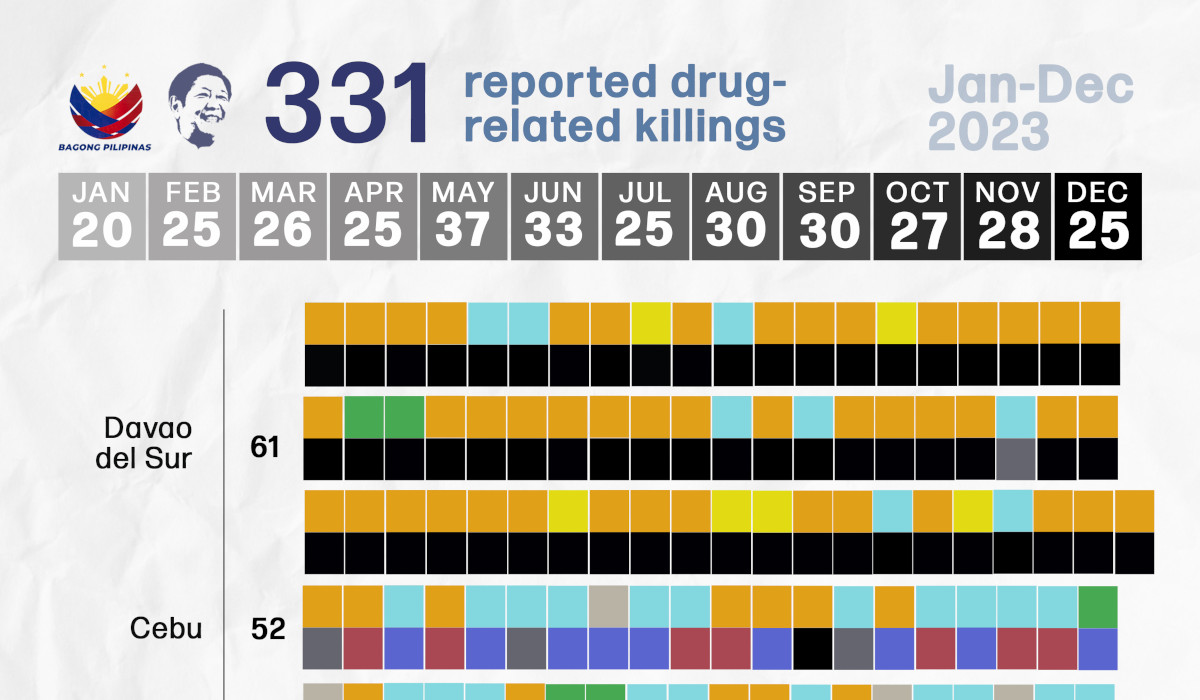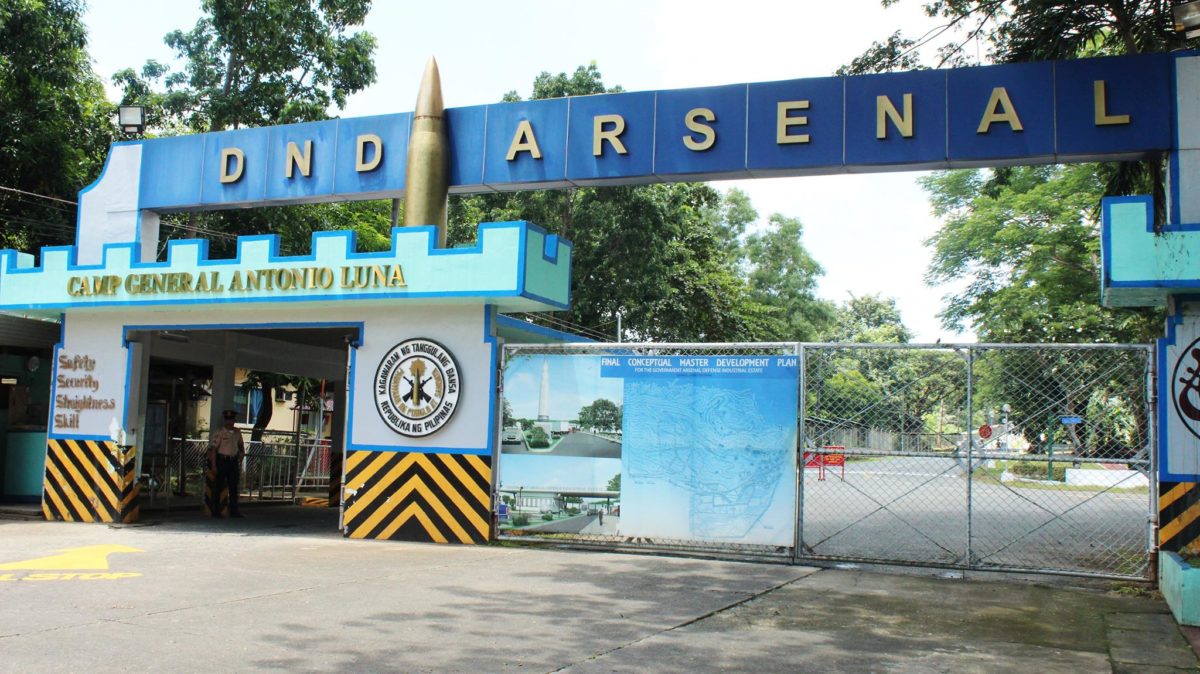It was supposed to be the biggest drug haul in Philippine history—then it was not. It was supposed to be a “bloodless” drug war—it never was.
When the news broke that 1.8 tons (initial estimate was 2 tons) of shabu said to be valued at PHP 13.3 billion was confiscated by the Philippine National Police at a checkpoint in Alitagtag, Batangas in the morning of 16 April, Malacañang quickly went to work. That no one died or was injured in the drug bust fitted perfectly in the “bloodless” drug war narrative that the Marcos Jr. administration has been pushing for quite some time.

In a press release dated 16 April, the Presidential Communications Office argued that the drug bust in Alitagtag is a testament to the effectiveness of the administration’s purported “bloodless” war on drugs. It highlighted the achievements of the government’s fight against drugs—the number of arrested illegal drug suspects, charges filed, and convictions, as well as the number of drug-cleared and drug-free barangays.
The Department of Interior and Local Government saw the Alitagtag drug haul as an occasion to insist on the administration’s “effective policing and intelligence gathering” against drugs “without resorting to violence and bloodbath.” This reiterates Marcos Jr.’s claim to a “careful approach” in their fight against illegal drugs. “Walang namatay, walang naputukan, walang nasaktan. Basta’t in-operate natin nang dahan-dahan, ‘yun naman dapat ang approach,” he said. The government news site PTV brandished it as “proof that the government’s bloodless approach to the drug war is working.”
What the government fails to mention, however, is the number of fatalities in Marcos Jr.’s war on drugs.
As of 15 April, the Dahas Project of the University of the Philippines Third World Studies Center has already recorded 621 reported drug-related killings under Marcos Jr.’s administration. Out of the 621 deaths, 264, or 42 percent, were perpetrated by state agents in the conduct of anti-illegal drug operations.
Davao City continues to be the hotspot of drug-related violence, with 17 fatalities recorded since the beginning of 2024. All but one of these deaths have been attributed to state forces. Since President Ferdinand “Bongbong” R. Marcos Jr. took office, 104 died in reported drug-related killings in Davao City. Of the 104 dead, 101 were killed by state agents in anti-illegal drug operations.
Davao City Mayor Sebastian Duterte even declared his own localized drug war last 22 March. This resulted in the immediate killings of 7 individuals within a 72-hour period. Former Philippine National Police (PNP) chief Gen. Benjamin Acorda Jr. ordered a probe into the alleged shootouts and relieved seven Davao City police officers. The PNP’s national leadership distanced themselves from Mayor Duterte’s declaration, even refusing to call their anti-drug campaign a “war.” Newly installed PNP chief Gen. Rommel Marbil remarked that their drug strategy “will always go for the rule of law.”
This, however, runs counter to the observation of the Human Rights Watch. Citing data from the Dahas Project, the international watchdog pointed out that an average of one person has been killed everyday in drug-related violence since Marcos Jr. took office in 2022. Contrary to how the administration makes it appear, “the ‘drug war’ remains a state policy.”
Indeed, from 8-15 April 2024, the same week as the seizure in Alitagtag, Dahas recorded 10 drug-related deaths. Of the 10 deaths, 7 were perpetrated by state agents.
The recent incidents (8-15 April) involving the deaths of seven drug pushers at the hands of state agents, alongside a police officer being killed by a drug suspect, vividly underscore the Human Rights Watch’s point.
Eros Arradaza, identified as a top 2 regional high-value individual, was killed in a buy-bust operation by Ormoc City police last 8 April. Twenty small packs of drugs and another 5 big packs were found at the scene. On the same day, Police Corporal Reo Manero of Pototan Municipal Police Station, Iloilo was killed while conducting covert police operations in the area of a high-value target named Michael Solis. The police pursued the suspect in an operation that ended in a shootout. Solis was fatally shot.
On 12 April, a joint drug buy-bust operation by elements of the PNP, the Armed Forces of the Philippines, and the National Intelligence Coordination Agency in Tawi-Tawi killed 4 men. The operation turned sour when the suspects allegedly fired at the state forces. Four unnamed men were killed while two armed suspects identified only as alias “Asir” and alias “Doh” were able to escape. Seven packs of shabu weighing 70 grams were recovered at the scene.
On the same day as the interception of the shipment in Alitagtag, a high-value target was killed in a joint operation by the PNP and the Philippine Drug Enforcement Agency (PDEA). Christopher “Boyboy” Delgado, 51 years old, allegedly resisted arrest while five of his associates were arrested. Twenty grams of white crystalline substance believed to be shabu was found at the scene.
On 15 April, four hours after the drugs were seized in Alitagtag Batangas, DILG Secretary Benhur C. Abalos Jr. called a press briefing. He told the media that he summoned them to demonstrate that the haul was intact, and to affirm that the confiscated items were confirmed to be shabu and that the entire shipment weighed approximately 2 tons. He gave a spot promotion to Capt. Luis de Luna who led the operations at the checkpoint, and made a pronouncement to the media that what was before them was “the biggest drug bust in the history of the country.” In a separate statement by the DILG released at 7:03 p.m., 15 April, he reiterated that the “record-setting P13.3-B drug haul was a concrete proof that the government’s policy of bloodless and preventive-centered campaign against illegal drugs is on the right track.”
The sentiment was echoed in a statement by the Philippine National Police (PNP) the next day, hailing it as a “historic milestone in Philippine law enforcement.”
The following day, 16 April, President Marcos Jr. traveled to Alitagtag, Batangas to lead the inspection of the drug haul. His Facebook page broadcasted the visit and the press briefing that followed. The president lauded the effectiveness of his administration’s approach to the drug war. His Presidential Communications Office published a news release later in the day titled “Bloodless campaign against illegal drugs working—PBBM.” The statement compared the supposed P13.3 billion haul in Alitagtag to the P11 billion in Infanta, Quezon seized during the administration of his predecessor in March 2022 which was then touted as the “biggest drug haul in Philippine history.”
The inventory of the drug haul was completed later that night (16 April). CALABARZON police determined that the shipment was worth PHP 9,684,920,400, almost PHP 4 billion less than their initial calculation, with a weight of 1,424.253 kilogram, half a ton short of their former estimate.
The significantly reduced number from the original estimate stirred doubts about the much-touted drug haul— the most successful in the country ever, but only for a few hours.
Following their short-lived claim, Secretary Abalos had to call another press conference on 18 April, 3:27 p.m. with the PNP, PDEA, Philippine Coast Guard, and local government officials from Batangas to emphasize that their initial announcement was premised on “estimates” and to clarify that they followed proper protocols in the confiscation of illegal drugs in Alitagtag.
The Alitagtag Municipal Police Station transparently stated that the search was triggered by the discovery of fake licenses inside the vehicle. While the drug bust in Alitagtag stands as an achievement in law enforcement, it was Malacañang that attempted to elevate it into something more than what it was. Marcos Jr.’s administration pounced upon the chance to turn it into a showcase, as an opportunity to trumpet his supposed “bloodless” drug war. As our data continues to expose, this narrative is simply a facade to the grim reality of continued violence during Marcos Jr.’s administration.
(Larah Vinda Del Mundo and Vincent Halog are researchers working on the Dahas Project of the Third World Studies Center of the College of Social Sciences and Philosophy, University of the Philippines Diliman. Joel Ariate and Miguel Reyes provided research assistance in drafting this article. Follow on X (formerly Twitter) the most recent Dahas reports: https://twitter.com/DahasPH.)






